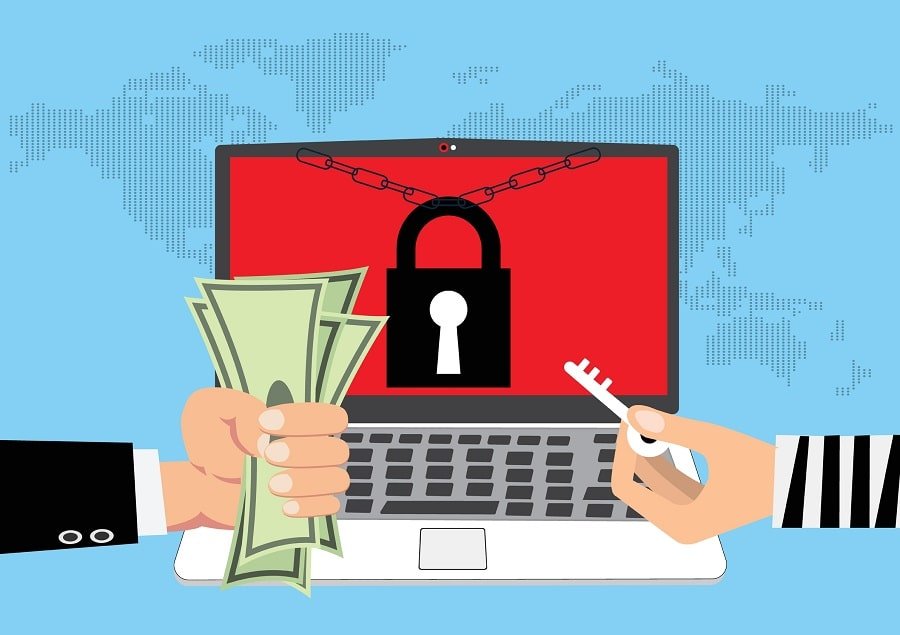Understanding Ransomware
Ransomware is a malicious software that encrypts files on a user’s system, rendering them inaccessible until a ransom is paid to the attacker. This type of cyber threat has gained significant traction in recent years, particularly affecting small businesses that may lack robust security measures. Ransomware operates through various sophisticated methods, including phishing emails, exploit kits, and remote desktop protocol (RDP) brute force attacks. Upon infiltration, the ransomware encrypts critical files, prompting the victim to pay a ransom, typically in cryptocurrency, to regain access.
There are several types of ransomware, each targeting different aspects of a system. Some of the most prevalent include crypto-ransomware, which encrypts files, and locker ransomware, which restricts access to the entire system. Additionally, there are variations like scareware, which pretends to be a legitimate security software to compel users into making unnecessary payments. The variety of ransomware strains contributes to the overall complexity of the cybersecurity landscape for small businesses.
Statistics reveal a troubling trend; in 2022, approximately 70% of ransomware attacks targeted small to medium-sized enterprises. These organizations often face an uphill battle in mitigating risks due to limited budgets and resources for information technology and cybersecurity. Moreover, small businesses may not prioritize robust data protection strategies, making them ripe targets for cybercriminals who see them as easier marks compared to larger corporations.
The consequences of a successful ransomware attack on a small business can be severe. Beyond the immediate financial impact of ransom payments, businesses may experience significant downtime, loss of sensitive data, and erosion of customer trust. In some cases, breaches can lead to long-term reputational damage that could jeopardize a firm’s existence. Understanding ransomware’s mechanisms and implications is crucial for small businesses to fortify their defenses against this ever-evolving threat.
Immediate Steps to Take After a Ransomware Attack
In the unfortunate event of a ransomware attack, swift and decisive actions are crucial to mitigate damage and facilitate recovery. The very first step is to isolate the affected systems immediately. This involves disconnecting the infected devices from the network to prevent the ransomware from spreading to other connected systems. IT personnel should ensure that any external networks, including Wi-Fi, are disabled. This is a vital measure to protect critical business data and prevent further compromises.
Once the infected systems are isolated, businesses should assess the extent of the breach. It is important to identify which files and systems have been impacted. Conducting a thorough inventory can assist in understanding the totality of the attack. Documenting all the findings during this assessment is beneficial for future reference and can aid in negotiations with cybersecurity professionals or law enforcement.
The next important step is to report the incident to relevant authorities. This could include local law enforcement agencies, as well as any regulatory bodies required to be informed about data breaches. Reporting the incident not only complies with legal obligations but also can provide access to resources and guidance to aid recovery efforts.
A significant decision will be whether or not to pay the ransom demanded by cybercriminals. Business owners should carefully weigh this choice, considering that paying does not guarantee access to the encrypted data and may encourage further attacks. Additionally, there are legal and ethical implications associated with paying ransoms, as it may violate regulations and potentially fund further cybercrimes. Engaging with cybersecurity experts or legal advisors can provide invaluable insights to navigate this challenging decision.
Can Ransomware Be Reversed? Exploring Recovery Options
In the face of a ransomware attack, the recovery of compromised data and systems is paramount for small businesses. The first line of defense often involves restoring data from backups, which underscores the critical importance of maintaining regular and secure backup systems. If the organization has comprehensive backups, data recovery can be straightforward, allowing businesses to revert to pre-attack conditions. However, it is essential to verify the integrity of these backups, as some ransomware strains may seek to infiltrate and encrypt backup files themselves.
Beyond backups, businesses may consider utilizing decryption tools developed by cybersecurity firms. These tools can sometimes unlock data encrypted by specific ransomware strains, although success rates vary widely depending on the complexity of the attack. It is vital for affected businesses to research and identify tools suited for their particular situation, as not all ransomware can be defeated by such software. Furthermore, engaging with cybersecurity experts can provide specialized insights and solutions tailored to the unique circumstances faced by small enterprises.
While some organizations might contemplate paying the ransom to regain access to their data, this approach is fraught with risks. There is no guarantee that cybercriminals will provide the necessary decryption keys after payment, and it may inadvertently encourage future attacks. Evaluating the potential risks and benefits is crucial for businesses considering this route, as the ramifications extend beyond immediate data recovery. The decision to pay should be approached with caution, as cybersecurity professionals often advise against it, recommending instead a focus on prevention, robust backup systems, and incident response strategies.
In conclusion, recovering from a ransomware attack is a multifaceted process that hinges on pre-existing measures and informed decision-making following an incident. Small businesses must adopt a proactive stance, preparing for the possibility of ransomware attacks by investing in data backup strategies and cybersecurity expertise.
Preventative Measures to Safeguard Against Ransomware
Small businesses can significantly reduce their risk of falling victim to ransomware by implementing a range of preventative measures. One of the most fundamental steps is to establish a routine for regular data backups. By securely backing up data on a consistent basis, businesses can ensure they have access to their information without succumbing to the demands of ransomware attackers. These backups should be stored in an off-site location or in the cloud, providing additional layers of protection against potential data loss.
Employee training is another cornerstone of an effective cybersecurity strategy. Small businesses should conduct regular training sessions focused on phishing awareness, enabling employees to recognize and appropriately respond to phishing attempts, which are a common gateway for ransomware. Understanding how to discern legitimate emails from malicious ones reduces the chances of inadvertently granting attackers access to the company’s network.
Furthermore, investing in robust security software is essential. Anti-virus programs, firewalls, and endpoint protection solutions serve as the first line of defense against ransomware. It is vital that small businesses keep this software updated to protect against emerging threats, as ransomware developers often adapt their strategies to exploit vulnerabilities in outdated systems.
Another crucial aspect of a strong cybersecurity framework is a comprehensive cyber incident response plan. This plan should outline protocols for identification, containment, eradication, and recovery in the event of a ransomware attack. Having clear procedures in place can minimize downtime and facilitate quicker recovery from a cyber incident.
Lastly, small businesses should consider investing in cybersecurity insurance. This insurance can help mitigate the financial impact of a ransomware incident, covering costs associated with data recovery, business interruption, and legal liabilities. By taking these proactive measures, small businesses can enhance their overall cybersecurity posture and safeguard against the persistent threat of ransomware.



